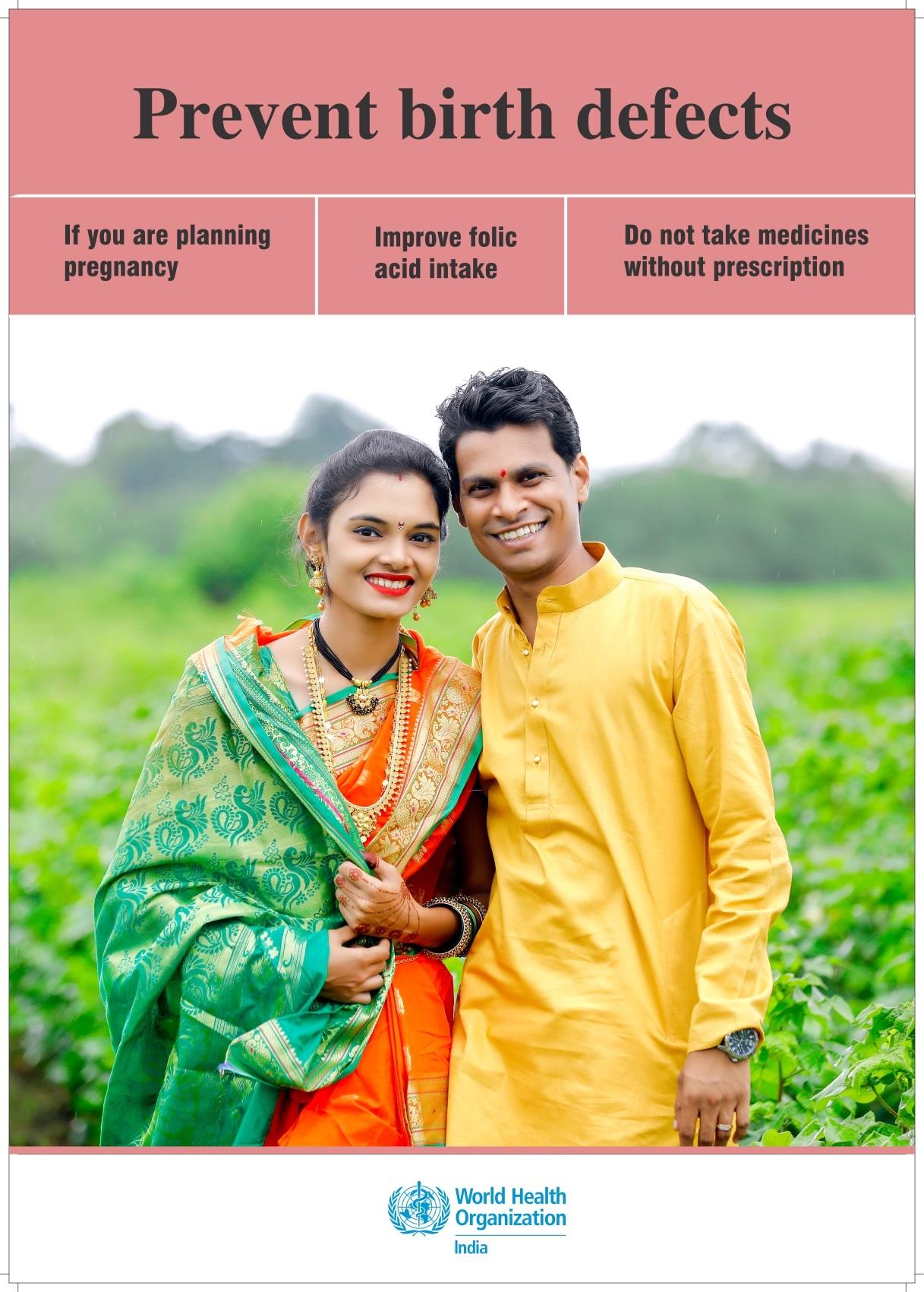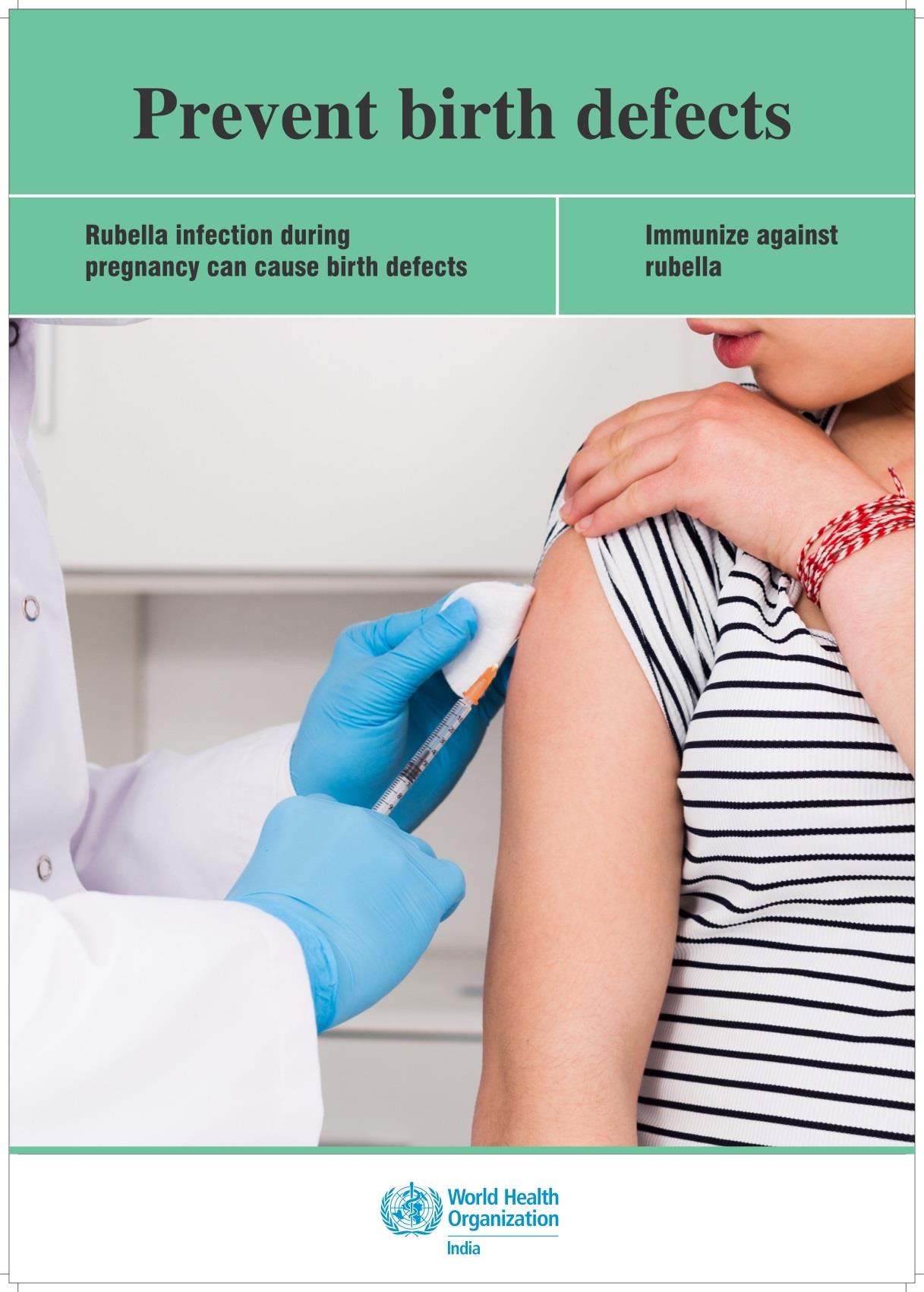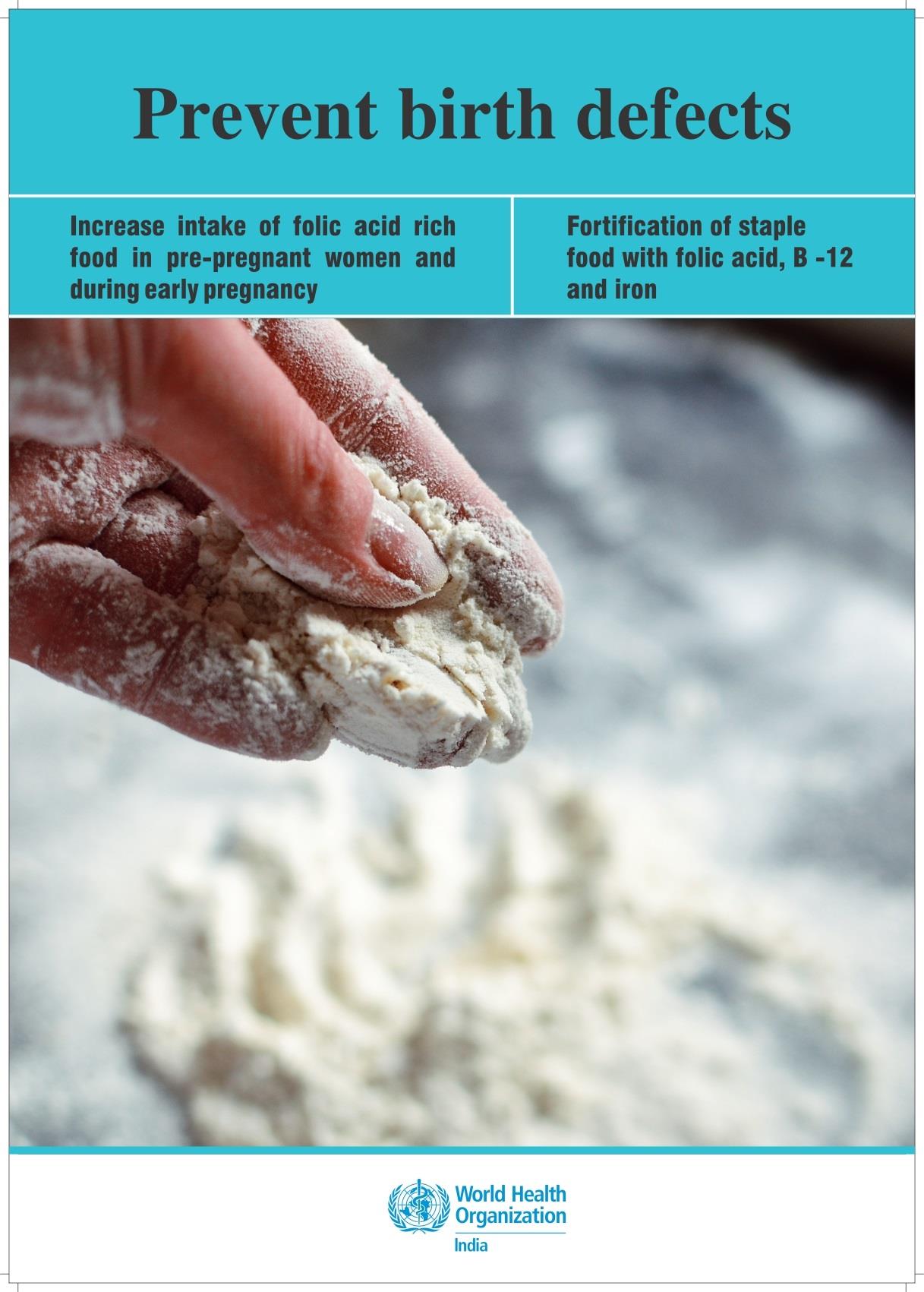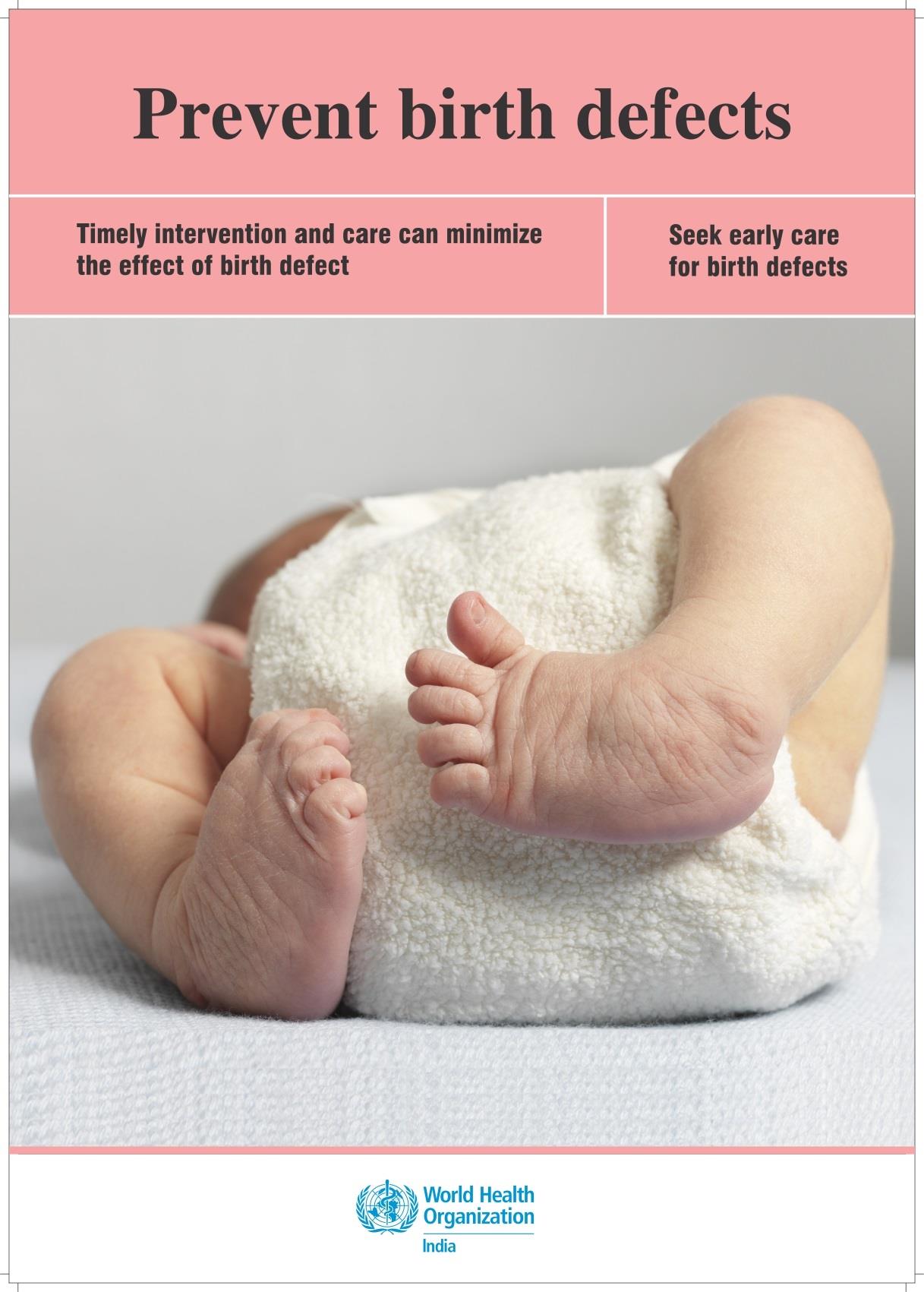World Birth Defects Day
World Birth Defects Day (WBDD), observed on March 3 each year, unites people and organizations working in the field of birth defects, also known as congenital anomalies. WHO is one of several collaborating global organizations to raise awareness of this serious global problem and advocate for more birth defects prevention, surveillance, care, and research.
There are many types of birth defects and this day recognizes our collective voice in raising awareness for all birth defects (#manybirthdefects1voice).
In India, more than 1.7 million children are born with birth defects every year. The term 'birth defect' encompasses a diversity of health conditions including physical malformations such as cleft lip or palate, chromosomal abnormalities such as Down syndrome, functional defects including sensory deficits such as congenital deafness. Some birth defects are externally visible, while some are not and require other diagnostic methods. Birth Defects have been recognized globally as a major contributor to neonatal and infant mortality and disability. Being aware of the impact of birth defects on our future generation and implementing a strategy for their prevention, early identification and management is therefore of utmost importance.
Although congenital anomalies may be the result of one or more genetic, infectious, nutritional or environmental factors, it is often difficult to identify the exact causes. Some congenital anomalies can be prevented. Vaccination, adequate intake of folic acid or iodine through fortification of staple foods or supplementation, and adequate antenatal care are examples of prevention methods.
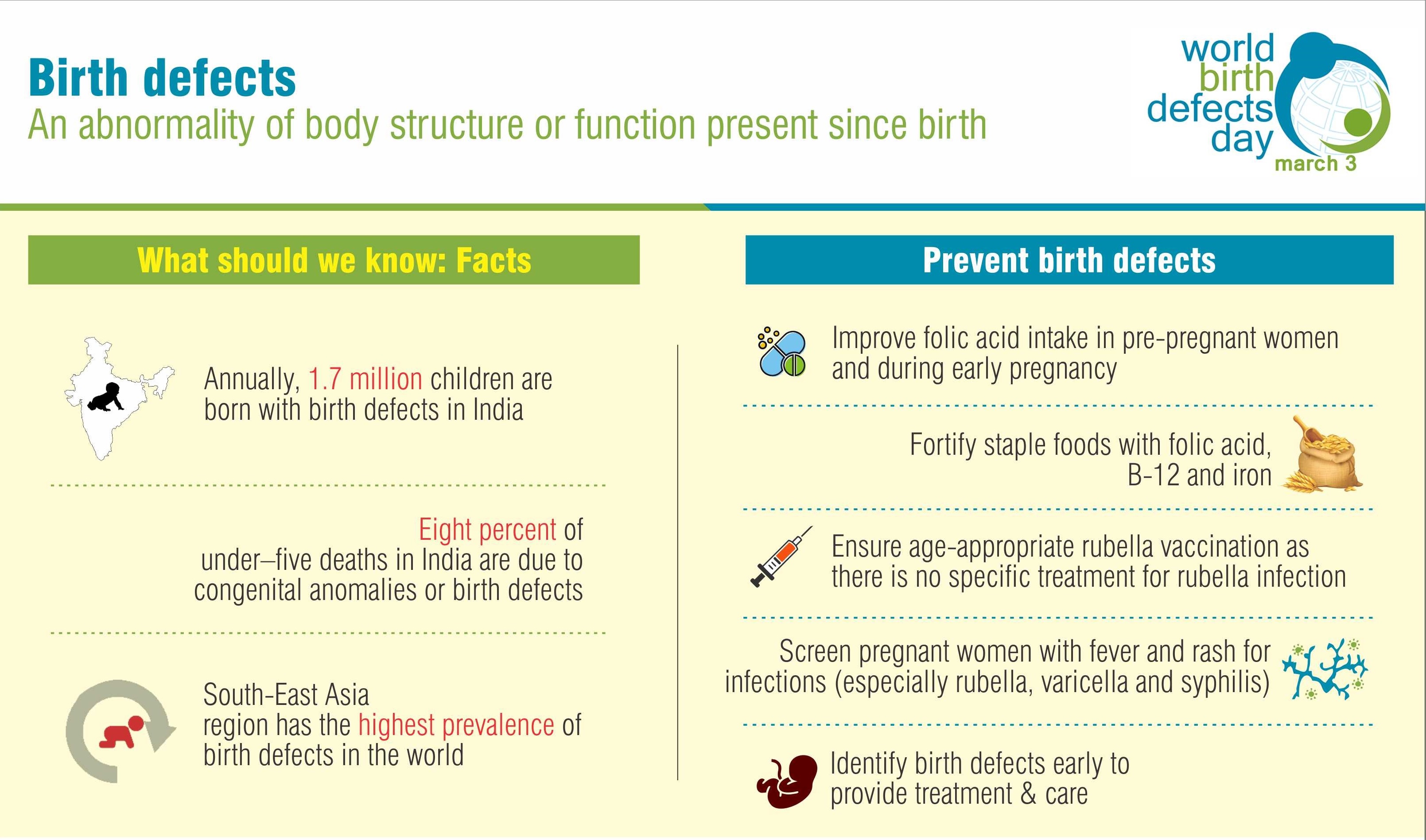
Prevention
Preventive public health measures work to decrease the frequency of certain congenital anomalies through the removal of risk factors or the reinforcement of protective factors. Important interventions and efforts include:
- ensuring adolescent girls and mothers have a healthy diet including a wide variety of vegetables and fruit, and maintain a healthy weight;
- ensuring an adequate dietary intake of vitamins and minerals, and particularly folic acid in adolescent girls and mothers;
- ensuring mothers avoid harmful substances, particularly alcohol and tobacco;
- avoidance of travel by pregnant women (and sometimes women of child-bearing age) to regions experiencing outbreaks of infections known to be associated with congenital anomalies;
- reducing or eliminating environmental exposure to hazardous substances (such as heavy metals or pesticides) during pregnancy;
- controlling diabetes prior to and during pregnancy through counselling, weight management, diet and administration of insulin when required;
- ensuring that any exposure of pregnant women to medications or medical radiation (such as imaging rays) is justified and based on careful health risk–benefit analysis;
- vaccination, especially against the rubella virus, for children and women;
- increasing and strengthening education of health staff and others involved in promoting prevention of congenital anomalies;
- screening for infections, especially rubella, varicella, and syphilis, and consideration of treatment.
Treatment and care
Many structural congenital anomalies can be corrected with paediatric surgery and early treatment can be administered to children with functional problems such as thalassaemia (inherited recessive blood disorders), sickle cell disorders, and congenital hypothyroidism (reduced function of the thyroid).
Multimedia
